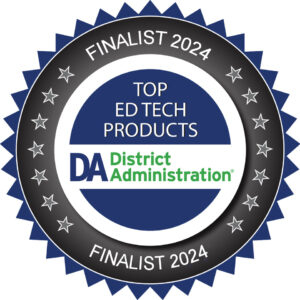Researching, evaluating, and purchasing the right educational technologies can be a daunting and exhaustive process for school districts – with curriculum and technology leaders carrying the weight of the burden. Selecting software solutions that drive accountability, student outcomes, and teacher success while ensuring data security, compliance, and integration with current systems consumes valuable and limited resources. Knowing the right questions to ask is imperative for success.
In this post, I’ll highlight nine considerations before purchasing EdTech – which is also available in an infographic here.
1. Data Security
Does the solution provider have documentation showing that they conform to student data privacy standards—FERPA, COPPA, HIPAA, SOPPA (Illinois state law), or the Student Data Privacy Pledge. To what extent does the software conform? You can sometimes read the vendor’s EULA (End User Licensing Agreement) for clues if they do not have obvious documentation on their website.
2. Interoperability
Does this software work with your existing software? Does it fit into your digital ecosystem? IMS Global Thin Common Cartridge, QTI, LTI, etc.? Integrations—does the software have a set of third-party tools that work with it to provide more advanced features? If so, how do you hook them up?
3. Technical Details/Requirements
Does your division have the necessary infrastructure to run this software—hardware, software, networking? In other words, does it run on what you have?
4. Accessibility
Can all of your students, including those with special needs, use this software equally well? (Line Readers, speech-to-text capabilities, e.g.)
5. Usability
How user-friendly is the interface? How much training will be required to implement the software fully? Will your teachers and students still be using the software in a year?
6. Following Academic Standards
Does the content match your division’s state and local standards so that the work you do in the software can align with your curriculum maps and pacing guides?
7. Feedback/Communication
Does the software provide the chance for teachers to give feedback to students? Can parents communicate with teachers?
8. Learning modes available
Can students learn asynchronously as well as synchronously with the software tool? Is there an offline version for those students who are having connectivity issues?
9. Customer Support
What type, when, and how much is offered? The better the support, the less of a training load there is on the division.
I’ll also add, it’s important to develop a process for evaluating EdTech and form a team.
Who should be on the team?
• Curriculum Office representative
• Technology Office representative
• Finance Office representative
• Building admins and select teachers
• Technology Resource Teachers
• Parents?
• Students?
If the process is well documented, then everyone should know:
• Who can suggest new software for adoption?
• To whom should they report their suggestion?
• What background research pertaining to the solution is each evaluation team member responsible for bringing to the table?
• Can a pilot version of the program be arranged so your division can see how it is going to work?
• Which criteria are your division going to use as guidelines for deciding which solution is a better choice?
Most of this is probably being done informally in your division now, but how do you know if all of the necessary points are being considered? What happens if you don’t have a formal process in place and a parent or community member challenges your reasoning behind a software purchase?
Consider a trusted partner in the pre-screening and evaluation process for selecting software technologies in your district. Veracity Verification Solutions provides K-12 districts the resources needed to select the right EdTech every time.
Contact us at info@veracityvs.com to learn more.

Author: Jim Yurasits
Senior Manager of Trust, Veracity Verification Solutions

